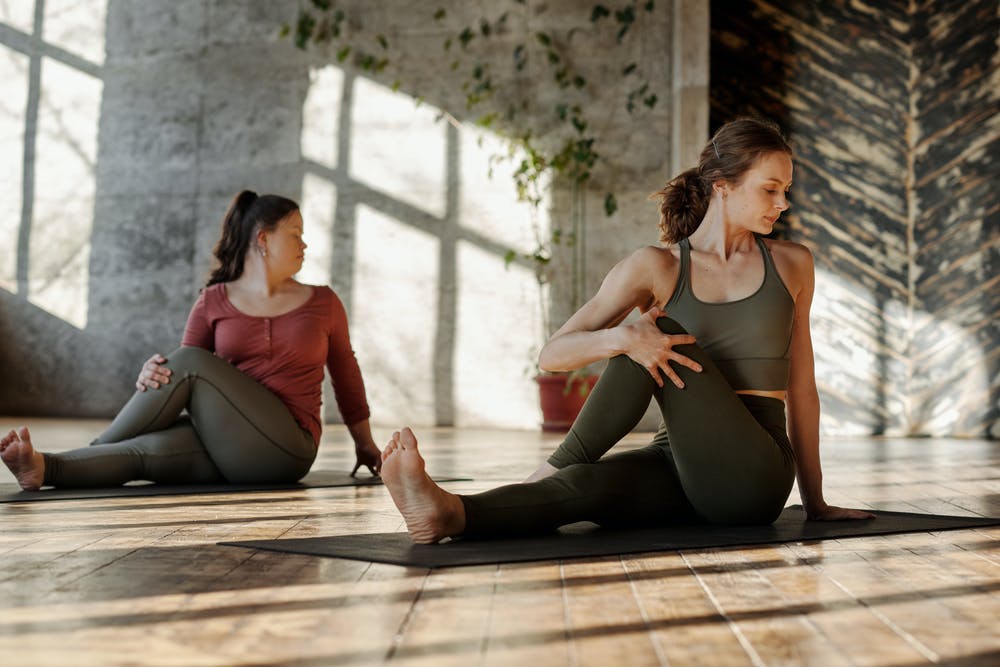Whilst the word ‘injury’ covers a wide range of issues, this blog is primarily aimed at everyday aches, pains, strains and sprains. For more serious injuries such as broken bones, wounds and anything else you should seek medical advice which I’m not qualified to give in this blog post! For those everyday niggles though, read on…
What causes aches, pains and injuries?
Often, aches and pains are a symptom of a long-term health condition such as sciatica, arthritis, fibromyalgia and so on. In this case, please read the previous blog which covers long-term medical conditions. Aside from specific health conditions, we all get aches and pains from time to time. This is something we may notice more regularly with age due to reduced flexibility, stiffening of joints and general ‘wear and tear.’ Additionally, the loss of muscle mass which occurs naturally with age can result in things we used to do easily taking more effort and longer recovery which can put us at increased risk of injuries.
Some of us may be aware that we are prone to aches and pains in certain areas. This can be more likely if we do certain jobs such as manual labour and lifting or sitting at a computer/using a phone for much of the day. Aches, pains and injuries can also be more likely in the case of overtraining, where somebody is pushing their body to exercise regularly and/or at high intensities and not taking adequate time or action to recover well.

In addition to all of the above, some minor injuries are caused by one off accidents and/or just plain bad luck! Strains or sprains occur when we damage muscles/tendons or ligaments respectively. Whilst strains and sprains do vary as above, the terms are often used interchangeably when we self-diagnose and they have similar symptoms and treatment. Symptoms may include bruising, swelling, stiffness and pain around the affected area. Read on for tips to help prevention and recovery.
How can we prevent them?
When it comes to everyday aches and pains, there are things we can do both in the shorter and longer-term to reduce the likelihood and severity of these. You should make sure to have a varied exercise programme to avoid overusing certain muscles/joints and underusing others which can create imbalances over time. Overusing areas can also make us more likely to injure them if they’re not able to recover adequately and similarly, underusing certain areas can make them weaker and more prone to injury. If you need help in creating a balanced exercise programme you should have a chat with an exercise professional. As well as varying your exercise programme, you should also try to vary your position and daily activities. For example, if you spend much of your day sat at a desk you should try to take breaks to walk around and stretch the back, neck and shoulders regularly. You could try placing your laptop on a higher surface if possible or using a standing desk at times. You could also try to plan your days to alternate tasks that may involve standing with ones that require sitting, lifting and so on to avoid being in one position or doing one activity for a long time.
If you feel you are prone to injury in a certain area, it may be that there is a weakness or imbalance that needs addressing. Again, you should seek professional advice for this but it may be worth doing some targeted exercises to strengthen the relevant areas over time.
You should always ensure to warm up and cool down thoroughly before and after any exercise session. During a warm-up, our heart and breathing rate increases and our body temperature will rise. This helps our muscles and joints to become more flexible and lubricated. Some dynamic stretches can help to prepare our muscles and joints for the exercises we are about to do before we begin our session which may include adding additional weight or resistance or working at a higher intensity than we would in daily life. A cool-down will do the opposite and help our body to gradually return to a resting state. If muscles and joints cool down too quickly and without adequate stretching we may be more likely to experience aches, pains and stiffness following an exercise session.

Flexibility work as a regular part of your training programme may help to reduce the likelihood of soft tissue injuries in the longer-term and so it’s essential not to skip stretching, yoga and similar activities. These can not only help with prevention of injuries but also with recovery post-exercise. If you’re someone who feels like these don’t count as ‘exercise’ then try fitting them in on rest days or as shorter sessions after a workout. If you don’t make time for prevention though, you’ll be more likely to need to make time for recovery!
Another popular way of aiding muscular recovery is massage therapy. Massage encourages healthy circulation which helps with the delivery of blood and nutrients to soft tissues and can promote their recovery. Massage also helps to relax muscles and ease tension and tightness which can cause aches and pains and reduce flexibility and thus increase risk or injuries if left unaddressed. Foam rolling works in a similar way and is something that can be done easily at home. Another accessible option which is becoming more popular is a massage gun which can be a great investment for easing aches and pains. Massage should be avoided in the case of a recent injury, however, but can be used to aid regular muscle recovery and support soft tissue health in the long-term.
What about recovery from soft tissue injury?
The first recommendation in treating strains and sprains is to follow the principles of RICE therapy.
Rest – Stop any exercise or physical activity and try not to put any weight on the injury.
Ice – Apply ice such as an ice pack or packet of frozen food wrapped in a thin towel to the injury. This can be done every 2-3 hours for around 20 minutes if possible.
Compression – Wrap a bandage around the injury to support it.
Elevation – Keep the affected area raised on a pillow as much as possible.
The above steps should help to support the injury and reduce swelling. As mentioned above, massage should be avoided for the first few days after an injury (seek professional advice before massaging if unsure). Alcohol and heat can also increase inflammation and so these should be avoided also.
Once you’re able to move the injured area without pain preventing this, you should try to keep it moving lightly and regularly so that the joint or muscle doesn’t become stiff.

It’s always worth noting that good nutrition and hydration will support recovery from injury or illness and lacking in certain vitamins, minerals or hydration levels can slow down the recovery process. Protein is particularly useful to support growth and repair of muscles and so speak to a qualified professional if you feel your diet may be below par.
Last but not least, there are many over the counter remedies including tablets, syrups, creams, sprays and gels that can help to manage swelling and pain. Speak to a pharmacist for advice on these and find the right treatment for you that will help to get you back up and moving as soon as possible.
Most strains and sprains start to feel better after around 2 weeks but a return to exercise should be gradual. It may be recommended to avoid strenuous exercise of the area for up to 8 weeks but if in doubt or if you’re injury is taking longer to heal it’s important that you speak to your GP.
I hope you’ve found plenty of tips in this blog to keep yourself pain and injury free as far as possible. Thank you for reading and I’ll see you back here soon ?
Bev Meakin – Personal Trainer/ Exercise Referral Officer and Complementary Therapist. Instagram @bevs_life

